Last Updated on 27.04.2023 by Iliyan
Planning a trip to South Korea and looking for the best Jeju Island Itinerary? Jeju Island is truly one of my favorite destinations in the world and I highly recommend it.
Jeju Island is the largest island on the Korean Peninsula. It is also called “The Hawai of South Korea”. It is the home of some of the most beautiful natural landmarks. The climate on the island is humid subtropical and this is the reason why it has turned out to be the preferable vacation spot for many Koreans. During 2011, it was classified as one of the new 7 natural wonders of the world. The interesting places on the island are located in the east and in the south. The Hallasan Mountain is situated at the very center of the island. This is the highest mountain in South Korea – 1950 m. While the island is relatively small, the distances are not so small at all thanks to the huge mountain Hallasan. This means that in order to go from the North to the South or from the East to the West and vice versa, you have to take on a long journey.
Contents
Jeju Island Itinerary: Awesome Things to Do
This Jeju Island Itinerary allows to do the best things in the island. If you are nature lovers like me, then Jeju Island is your place. Here, there are some picturesque waterfalls, mountains, caves, beaches, which are worth visiting. Thanks to the beautiful nature, millions of tourists visit the island thorough the whole year.
Climb the Seongsan Ilchulbong Peak
One of the most significant landmarks on the Jeju Island Itinerary is Seongsan Ilchulbong Peak. It is also called Sunrise Peak because of the lovely sunrise from the view. This majestic 182-m., inactive volcano is rising in the eastern end of the island. The afforested crater is surrounded by serrated rocks that look like a giant crown. The crater of the volcano is 600 m. wide in diameter and 90 m tall. The object is part of the world heritage of UNESCO.
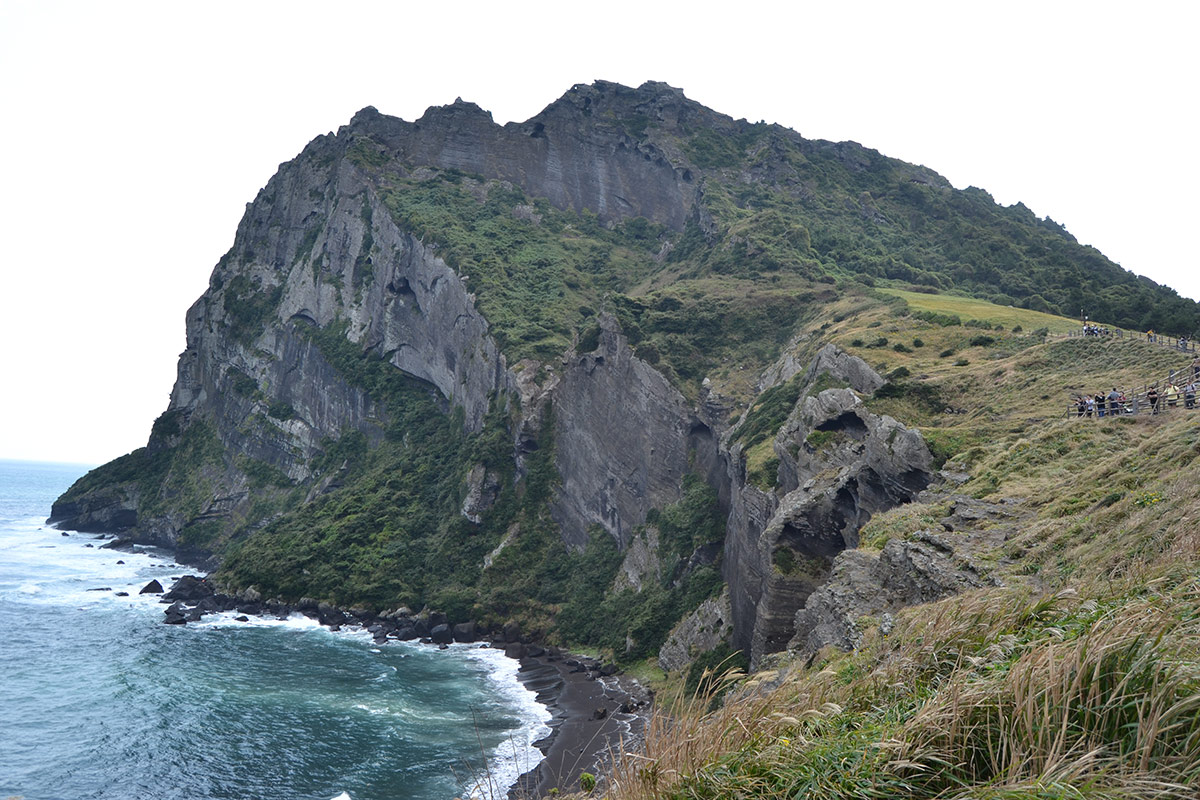
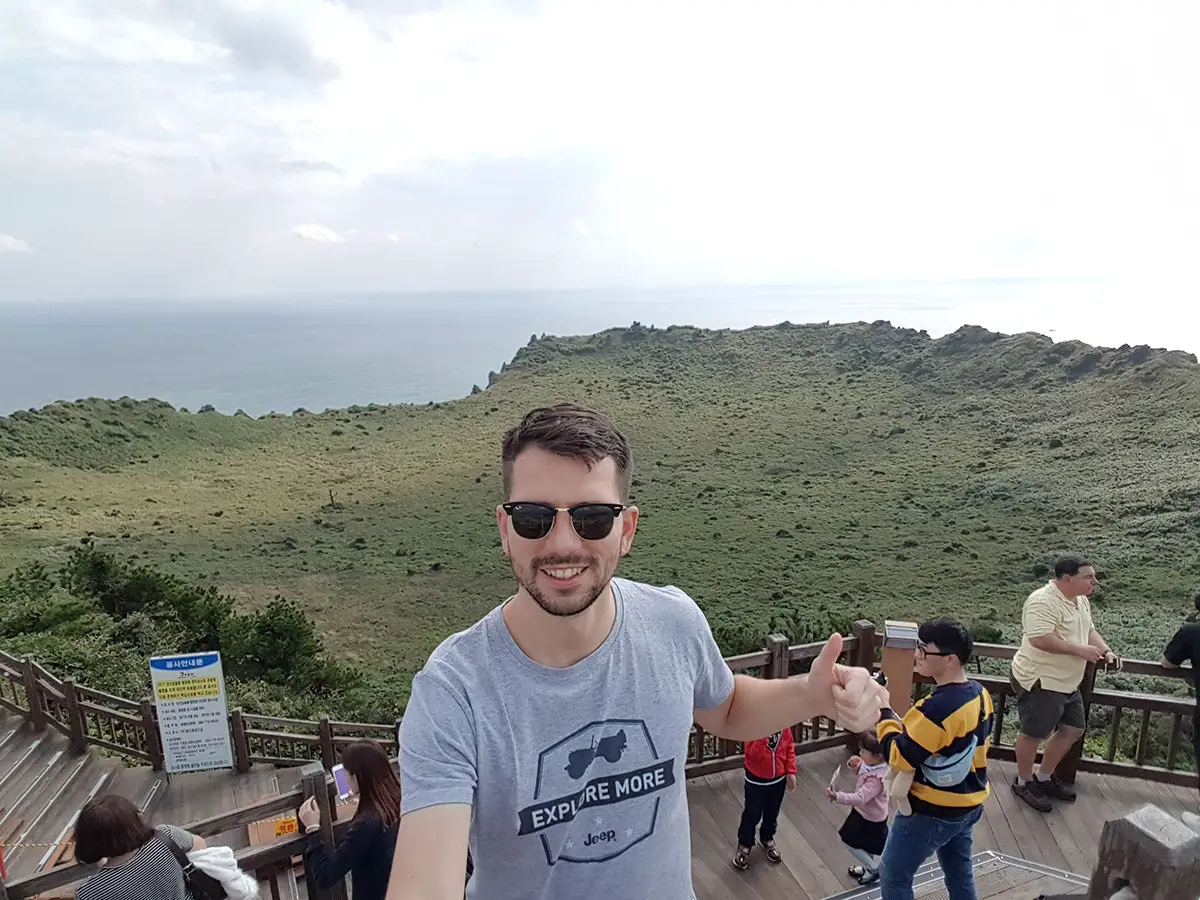
Climbing up to the entrance at the top of the volcano is 25 minutes long. The path and the stairs are marked and maintained well, so the climbing is suitable for people of all ages. On the way there, do not miss to look back because there are amazing, scenic views that open up in front of your eyes.
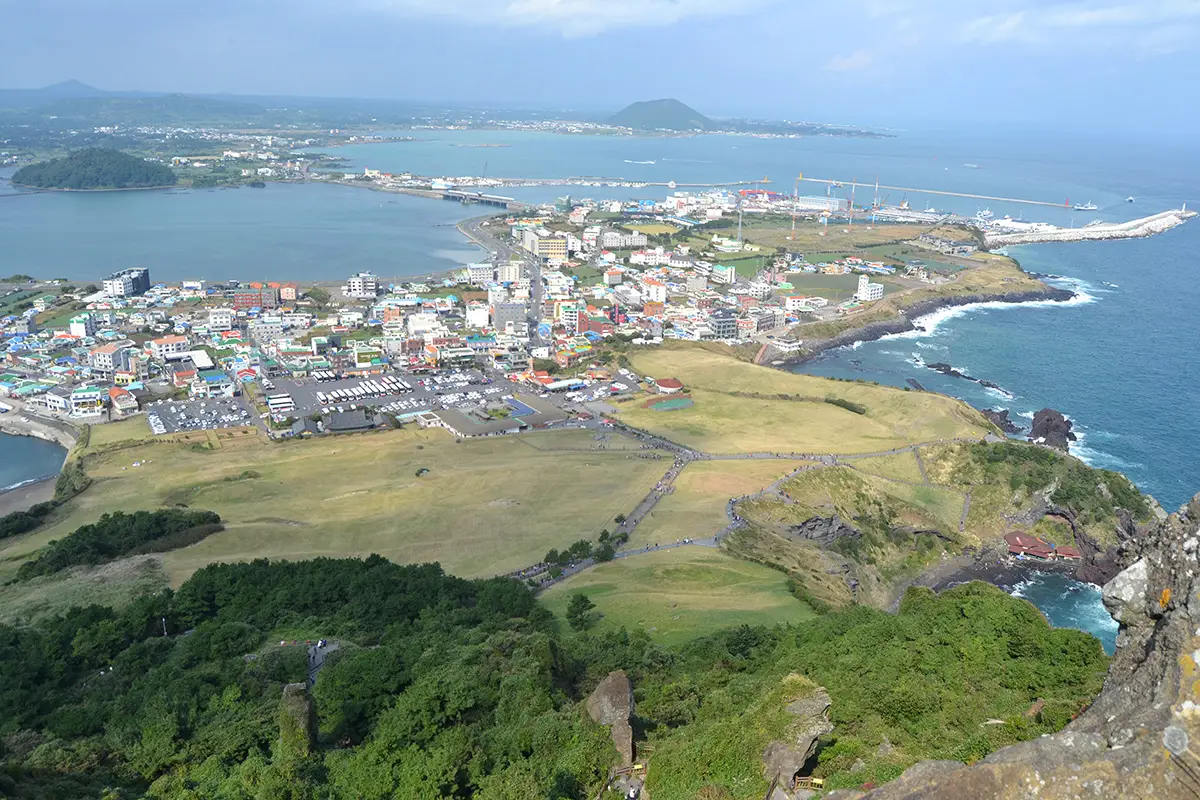
If you are lucky, near the beach that you can go down to, you can also see the famous female divers called “haenyeo”. These are a group of women, ranging from 70 to 80 years that dive 10 m. deep into the sea without oxygen masks, in order to find mussels, abalones, sea urchins and cucumbers, snails and other seafood. Thanks to them, for long years on the island, and even maybe until today, the matriarch ruled. You can read more about these women here.
Entrance fee for adults is 2,000 ₩, while for kids is 1,000 ₩.
Explore the Manjanggul cave
This remarkable lava tunnel has been formed by a volcanic eruption and is an object of the world cultural heritage of UNESCO. The tunnel has been formed 2.5 million years ago and is well-preserved even until this day, unraveling a beautiful view to our sight. Only one km of his total longitude is opened for tourists.

This cave was rather different than the ones I had seen before due to the lava formations. Aside from that, the cave also offers interesting structures such as lava stalagmites and stone pillars.
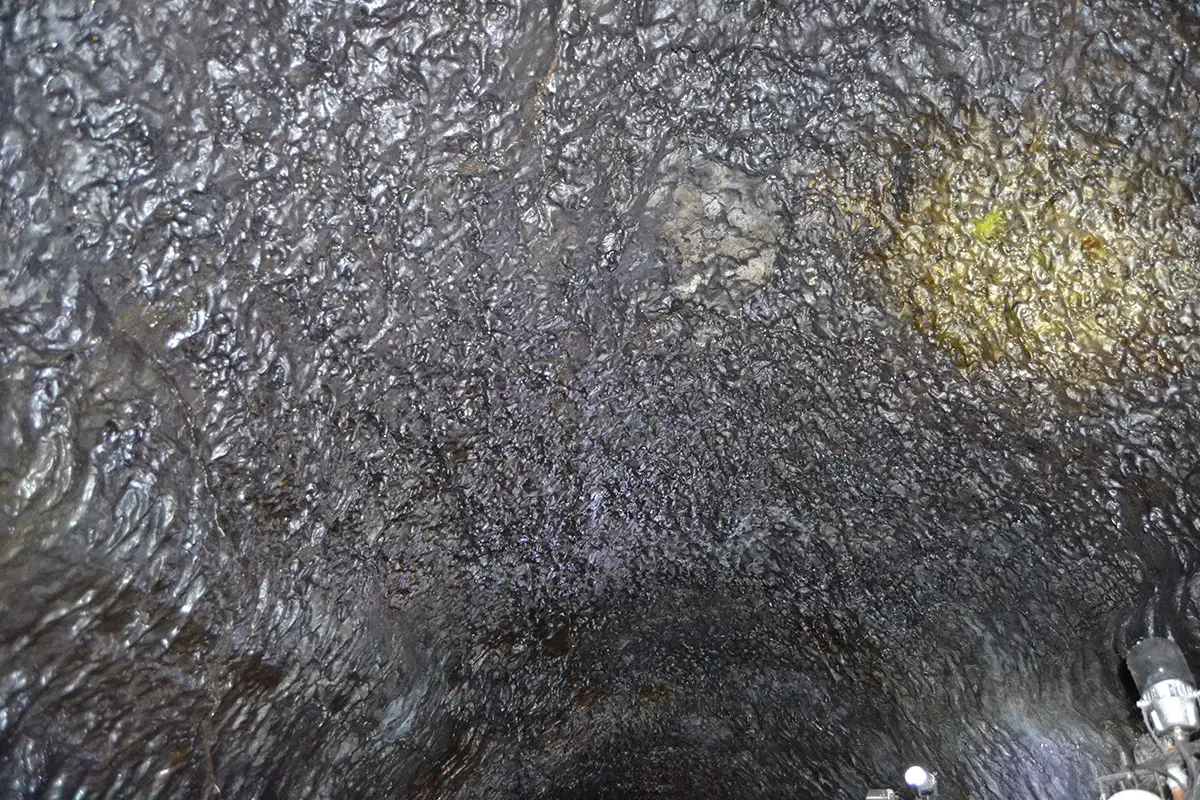
Another interesting part of the tunnel is the so-called lava raft. It has been formed when rock fragments were falling from the ceiling or the wall during the lava flow, after which they were spread out and hardened at one spot. The most famous lava raft has been called “The Stone Tortoise” because it has been formed like the Jeju Island. In some cases, the fallen rocks have been covered entirely with lava; they are looking like balls and they are called lava balls.
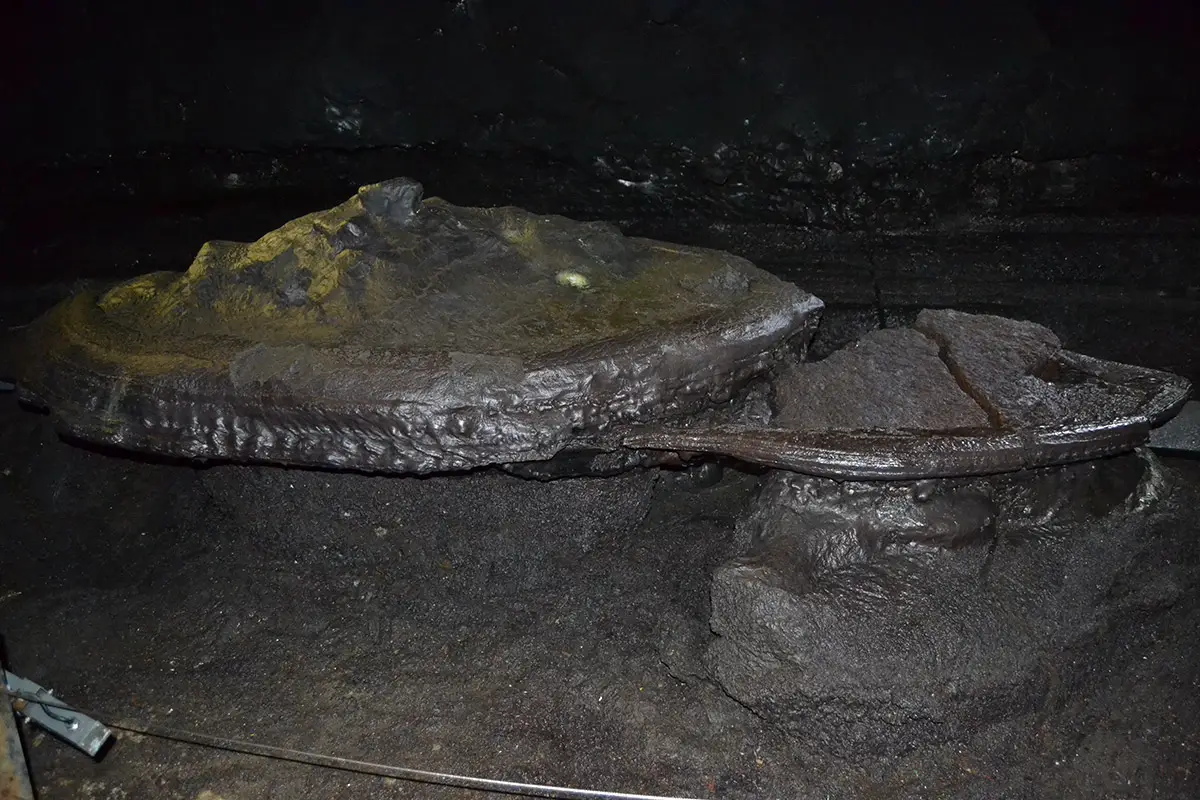
The final point of our walk to the lava column! It has been formed by the confluence of the lava from the ceiling to the floor, after which it has hardened. With the height of 7.6 m, this is the highest lava column in the world.
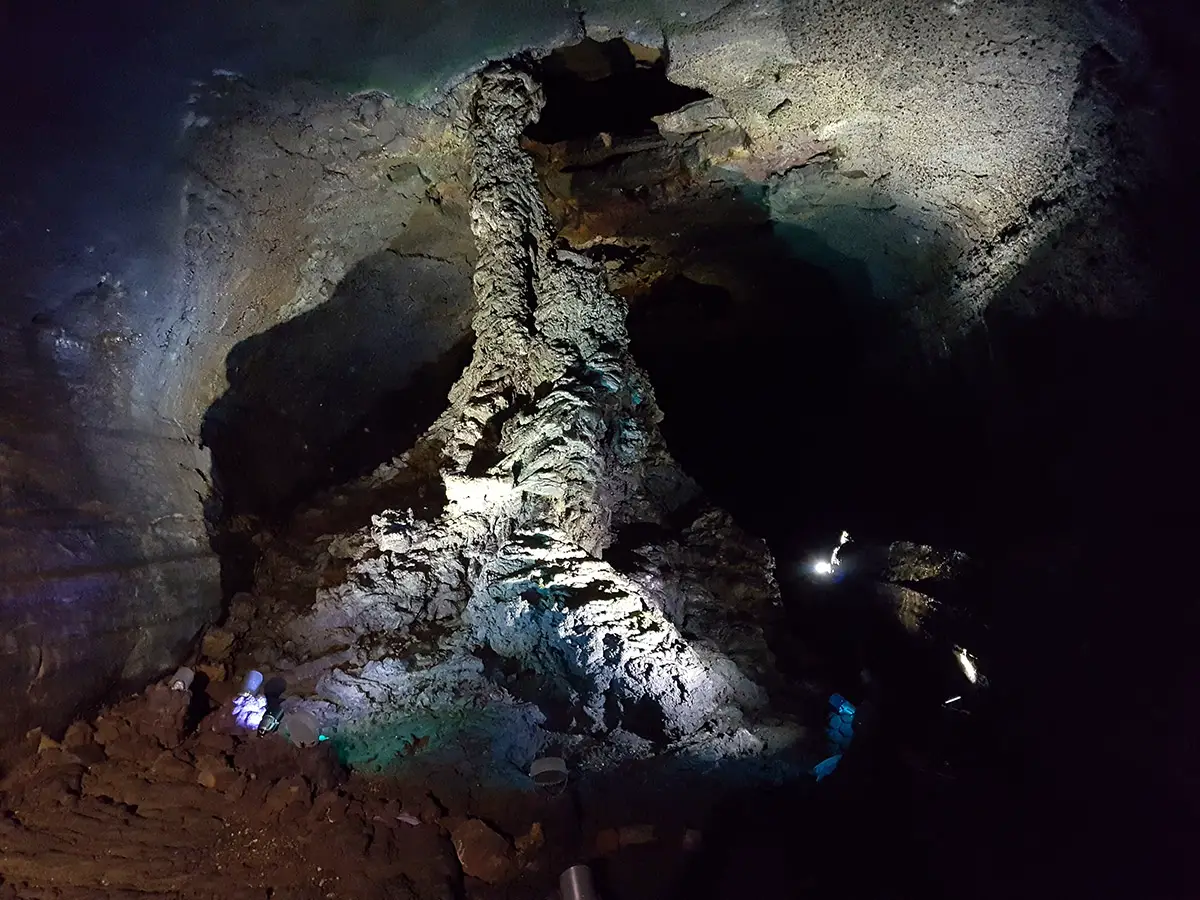
The temperature inside the cave is between 11 ~ 21℃. Inside, you can find a lot of information for the type of volcanic cave. The entire walk will take about 30-40 minutes. The entrance fee for adults is 2,000 ₩, while for kids is 1,000 ₩.
Gimnyeong Beach
Not far from the Manjanggul cave is located one of the most beautiful beaches on the Jeju Island. The crystal clear waters, combined with the electric blue watercolor and the white sand captivate the hearts of every visitor.
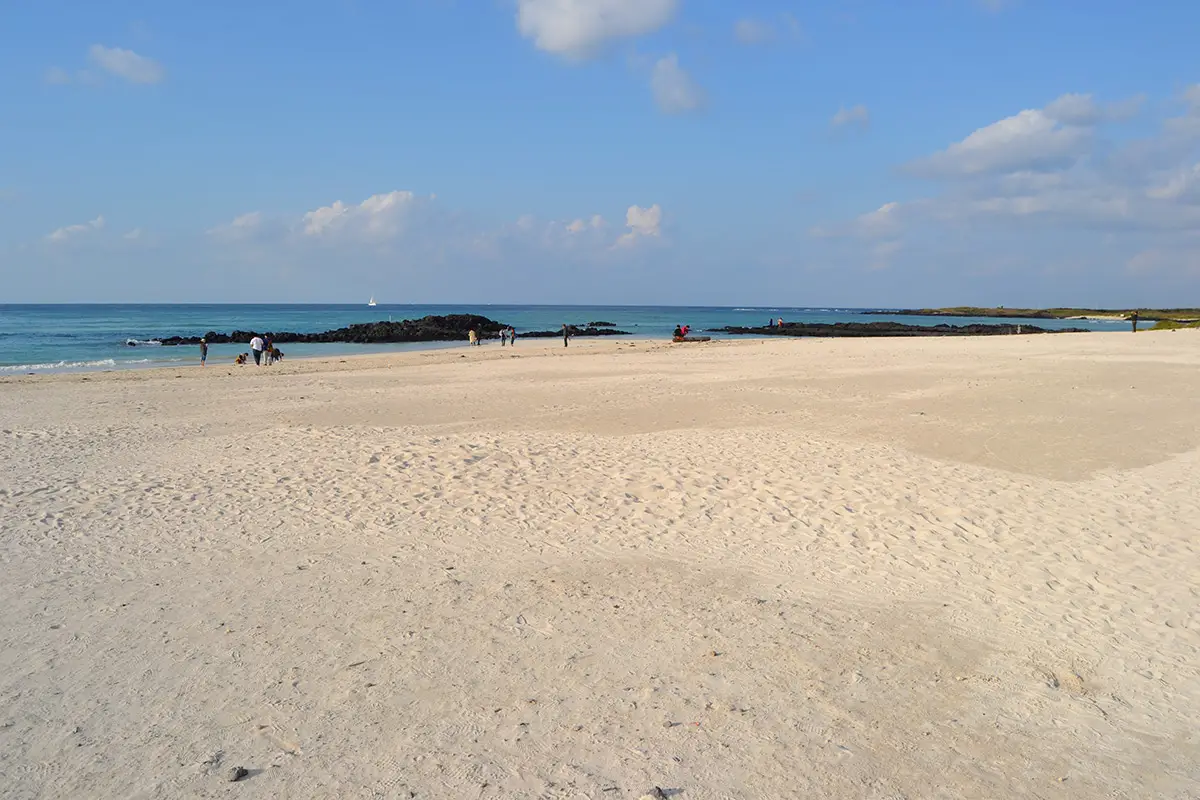
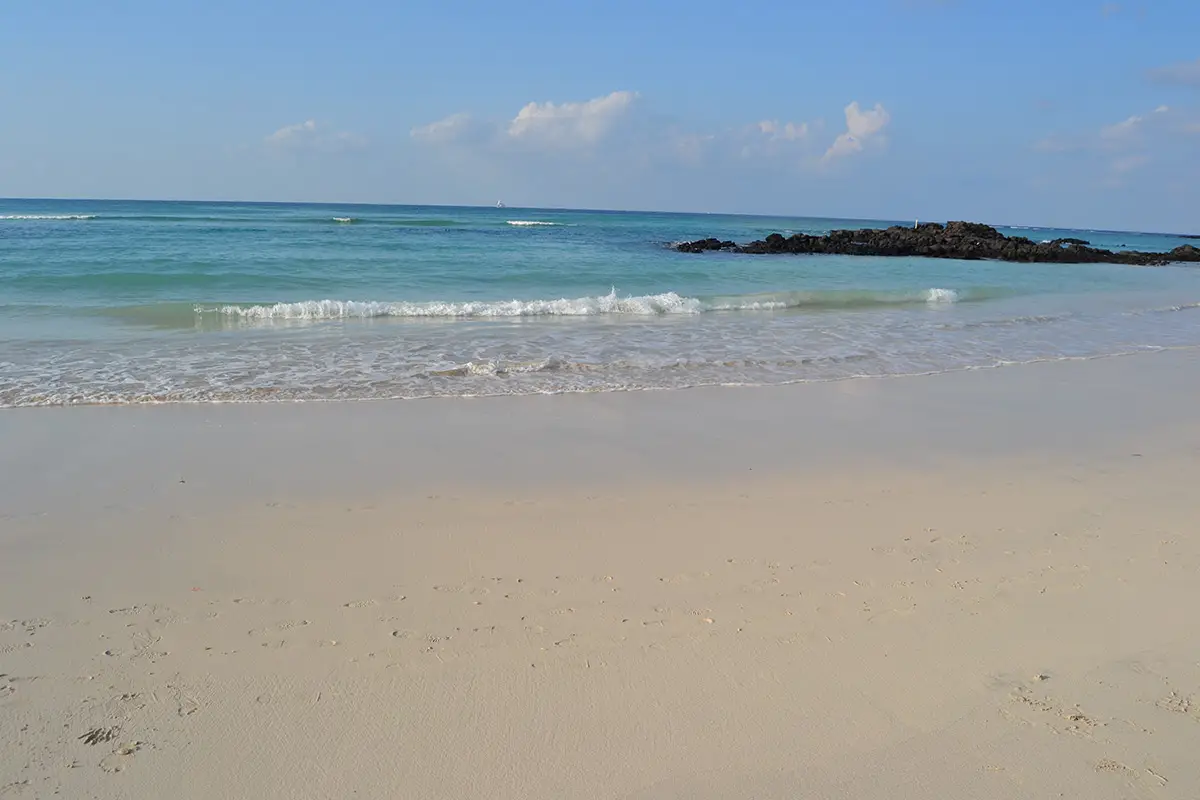
Commuting through the island can be realized by car or by the town buses. The buses are very comfortable and all of them have Wi-Fi. They move relatively regularly but as I mentioned already, the distances are large, so keep in mind to watch for the time.
Cheonjiyeon Falls
The Cheonjiyeon waterfall literally translates into “A sky connected with land”. At the bottom of the waterfall, there is a pond, which is 20m. deep, and the head of the water itself is 22m.
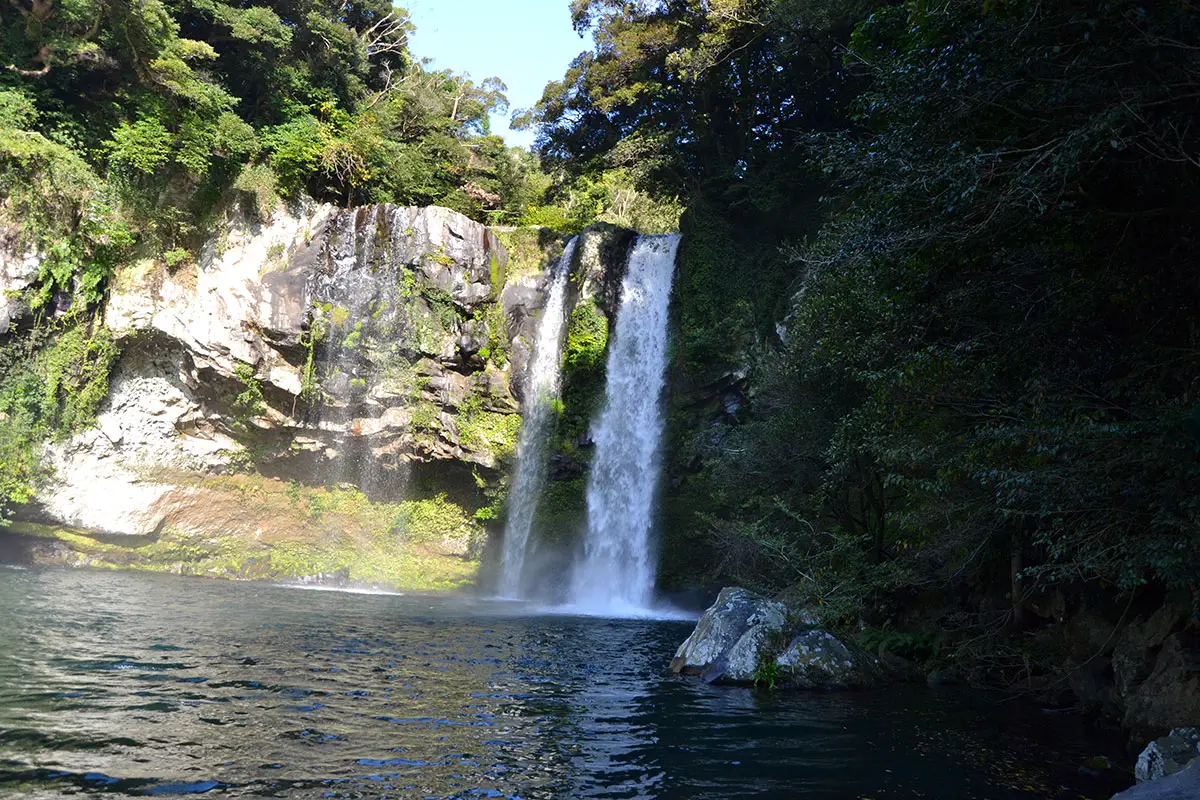
On your way from the waterfall entrance you will pass through a well-maintained paved path with many types of trees and plants surrounding it. On certain spots, there are stone steps and little bridges that will bring you to the other side of the water. The path to the waterfall is beautiful and it will take you ten minutes to reach it.
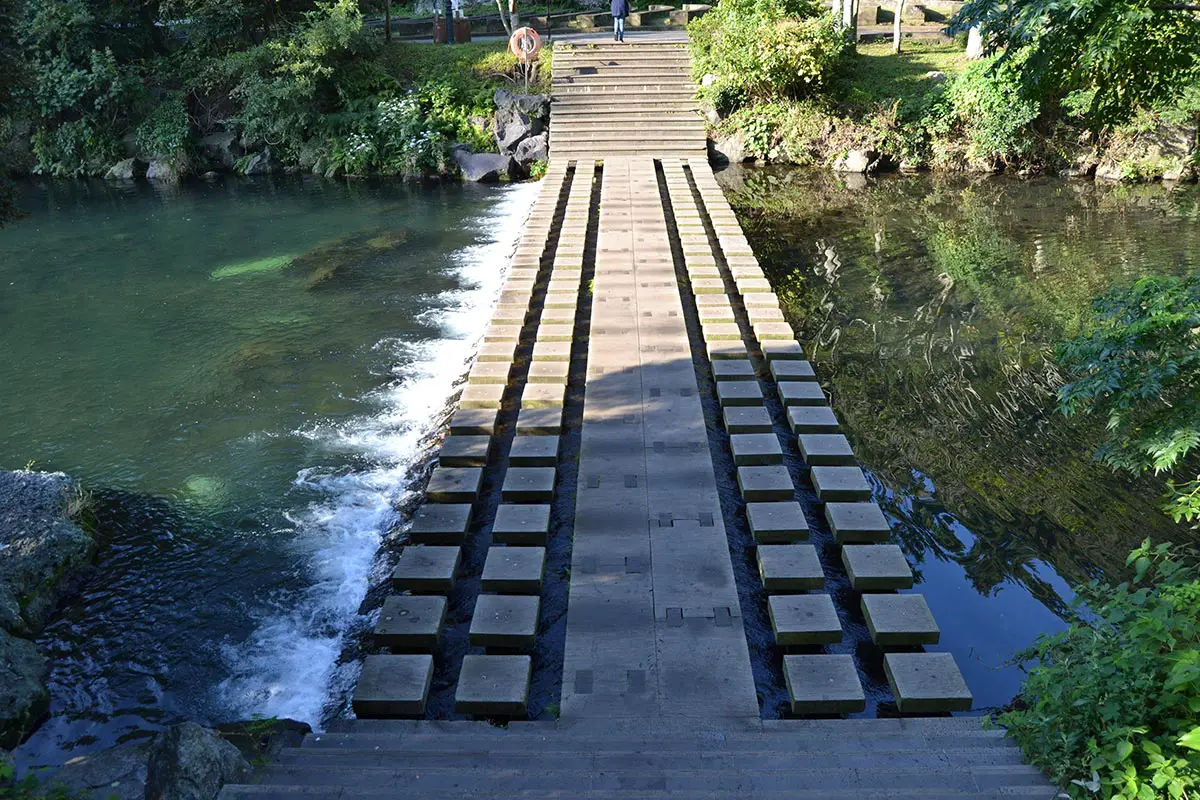
The waterfall park is wonderful and it is suitable for people of all age groups, as well as for disabled ones. Later on, I understood that the business hours of the park are until 10 PM, so I would recommend that you visit it in the evening when the waterfall is wonderfully lit, and the place is romantic. The entrance fee for adults is 2,000 ₩, while for kids is 1,000 ₩.
Dol hareubang
While entering the park, you will find big stone figures with human faces, called “Dol hareubang”. These are big rock statues, which are considered as gods, offering both protection and fertility. They have been cared by porous basalt (volcanic rock) and can be up to three meters high. They have a round face with protruding eyes, big noses and a slight smile. According to the local dialect, it literally means “a grandpa made of stone”. The origin of these statues is mysterious. The historic explanation is that the statues have been initially settled on the Eastern, Southern and Western gate of the Jeju fortress as keepers of the palace for a protection against demons. Subsequently, thanks to the urbanisation, they have been removed from the fortress walls and placed elsewhere.
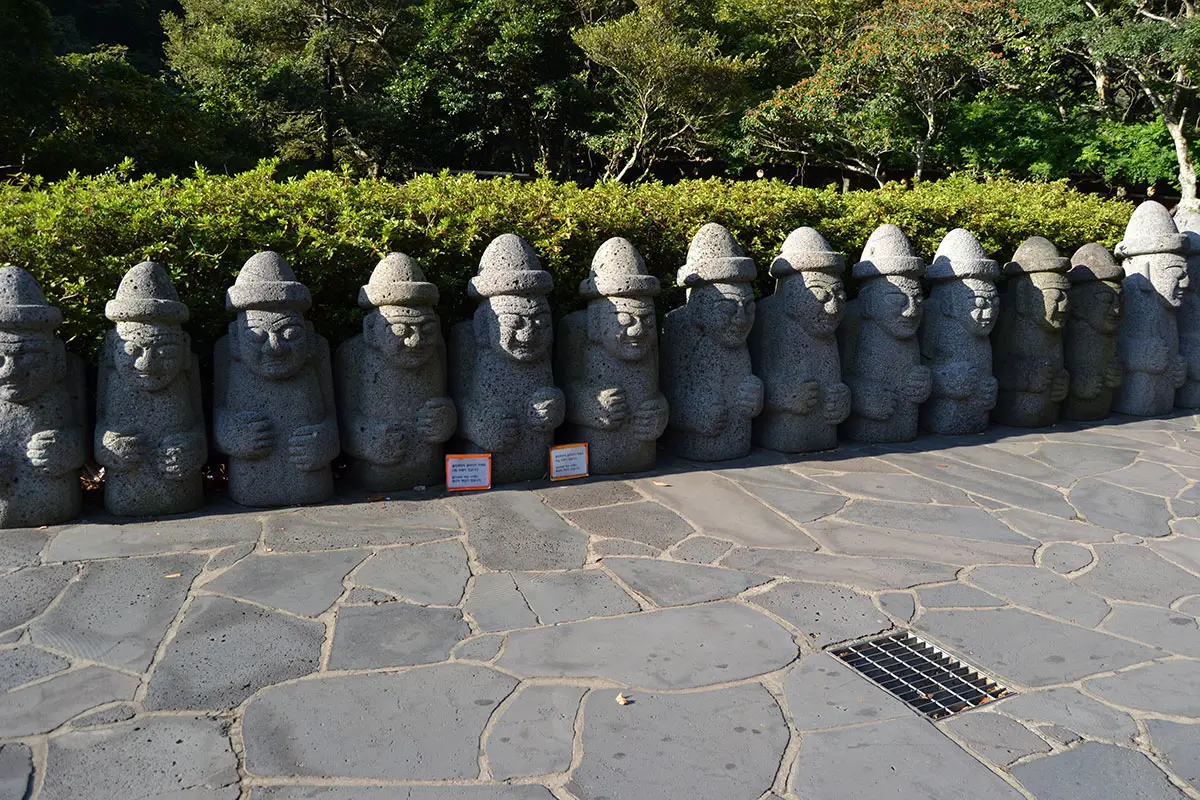
Nowadays, you can see them outside of the houses – on bridges, in front of restaurants, shops and other places. During the course of time, they have turned out to be a symbol of the Jeju Island. Visiting Dol hareubang is absolutely must in every Jeju Island Itinerary.
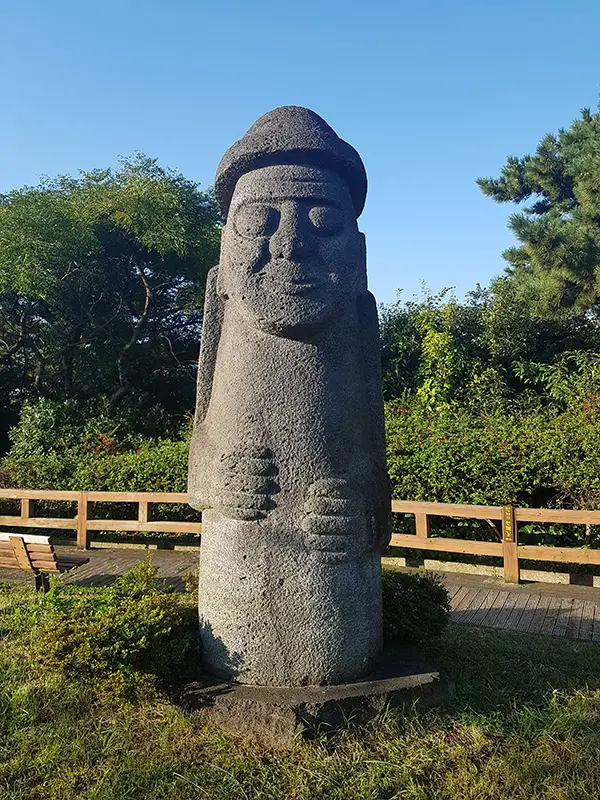
Walk on the Saeyeongyo Bridge
After you visit the waterfall and the park, you can walk on the beautiful bridge Saeyeongyo, which is nearby. This is the longest pedestrian bridge in the Southern part of the country, whose construction was inspired by the local traditional wooden boat called “Tewu”. The bridge connects the Seogwipo harbor with the Birds Island.
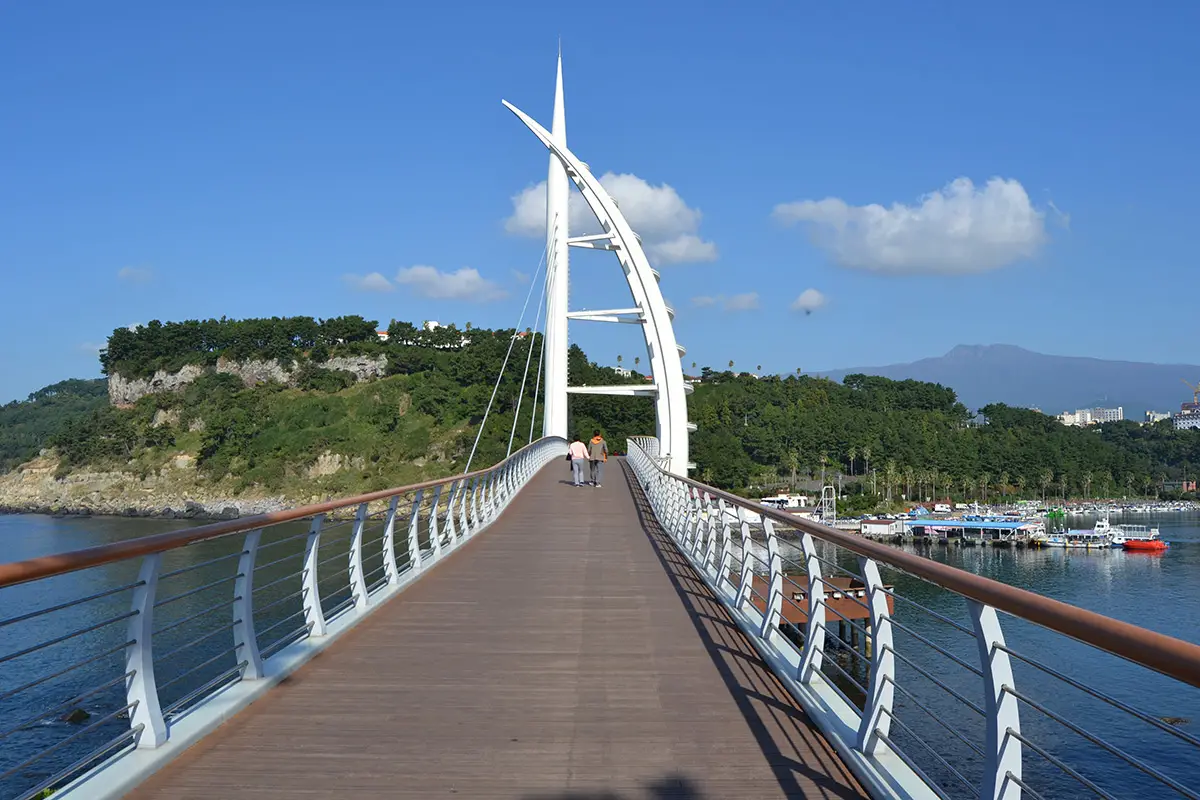
Jeongbang Falls
This is the only waterfall in Asia, which falls directly into the ocean. Its waters fall from a 23m. height and it is one of the three big waterfalls on the Jeju Island.
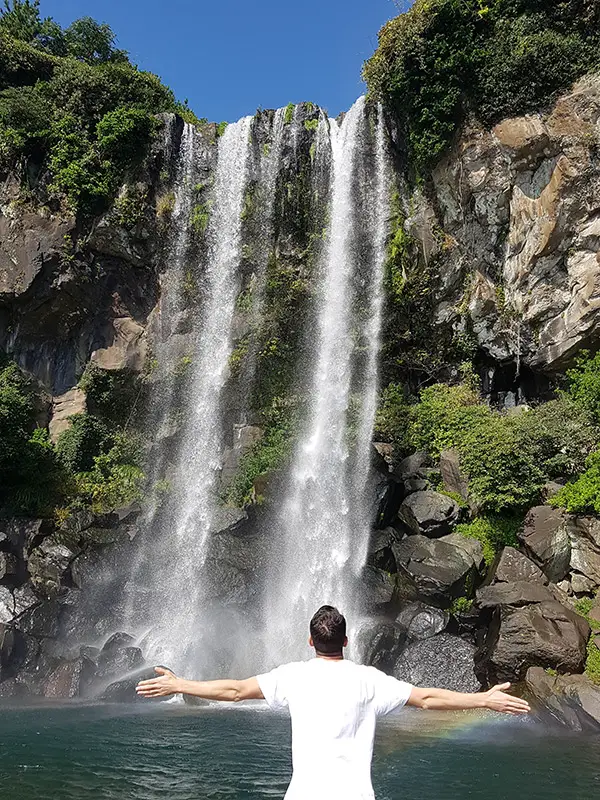
The entrance fee for adults is 2,000 ₩, while for kids is 1,000 ₩.
Jusangjeollidae Cliff
There are remarkable volcanic cliffs and pillars, formed by the eruption of the Hallasan volcano in the sea. These impressive hexagonal and pentagonal stone columns are a geological phenomenon and are stated to be a cultural monument of the Jeju Island. They have formed thousands of years ago when the lava from the Hallasan volcano had cooled from its touch with the sea and it shrunk inside different geometric forms.
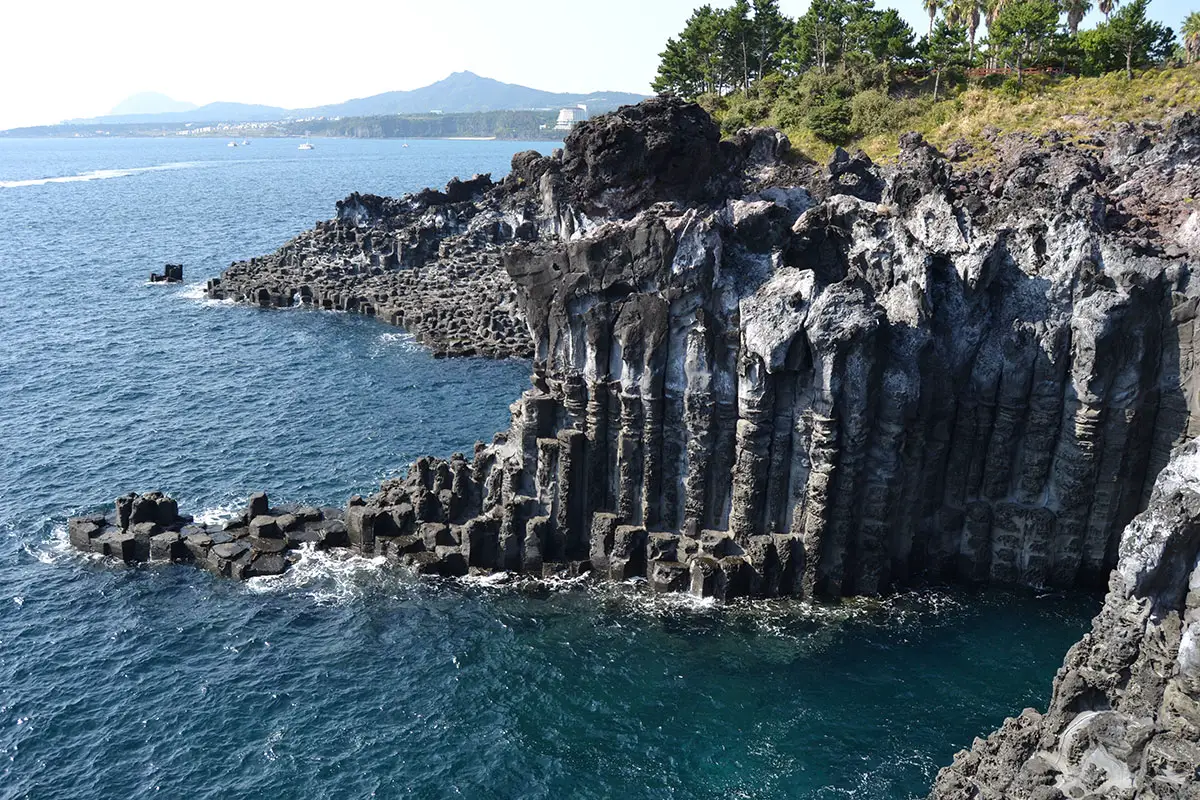
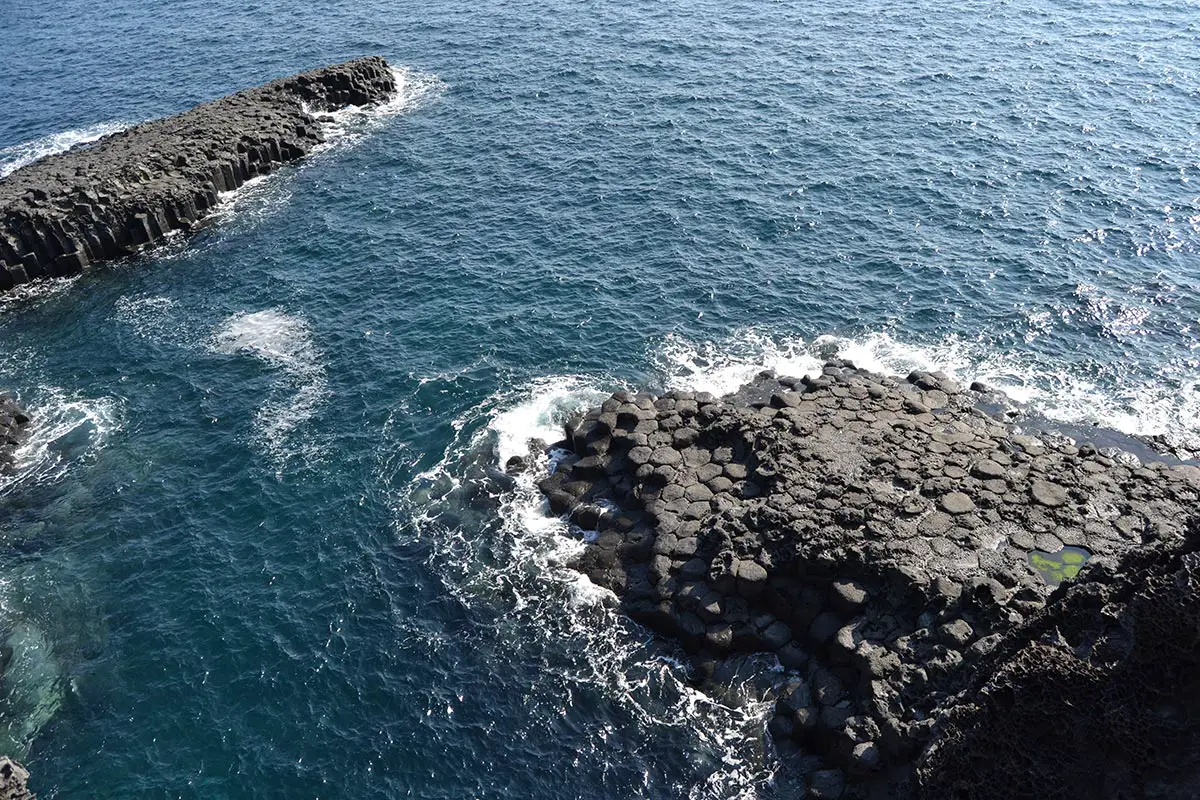
The entrance fee for adults is 2,000 ₩, while for kids is 1,000 ₩.
Seonnyeotang
One of the places that I most wanted to visit was this natural swimming pool. It was not an easy thing to find it though since I didn’t know how it was named exactly. Luckily, after a few sights at its picture, some local people explained to me it is hard to reach it without a car. They were kind enough to order a taxi for us and to explain the driver which is the place we want to visit. When we arrived, there were no people whatsoever but later one, they started coming. The water inside the lagoon was so crystal and turquoise that for a moment, we were just standing there, enjoying its beauty.
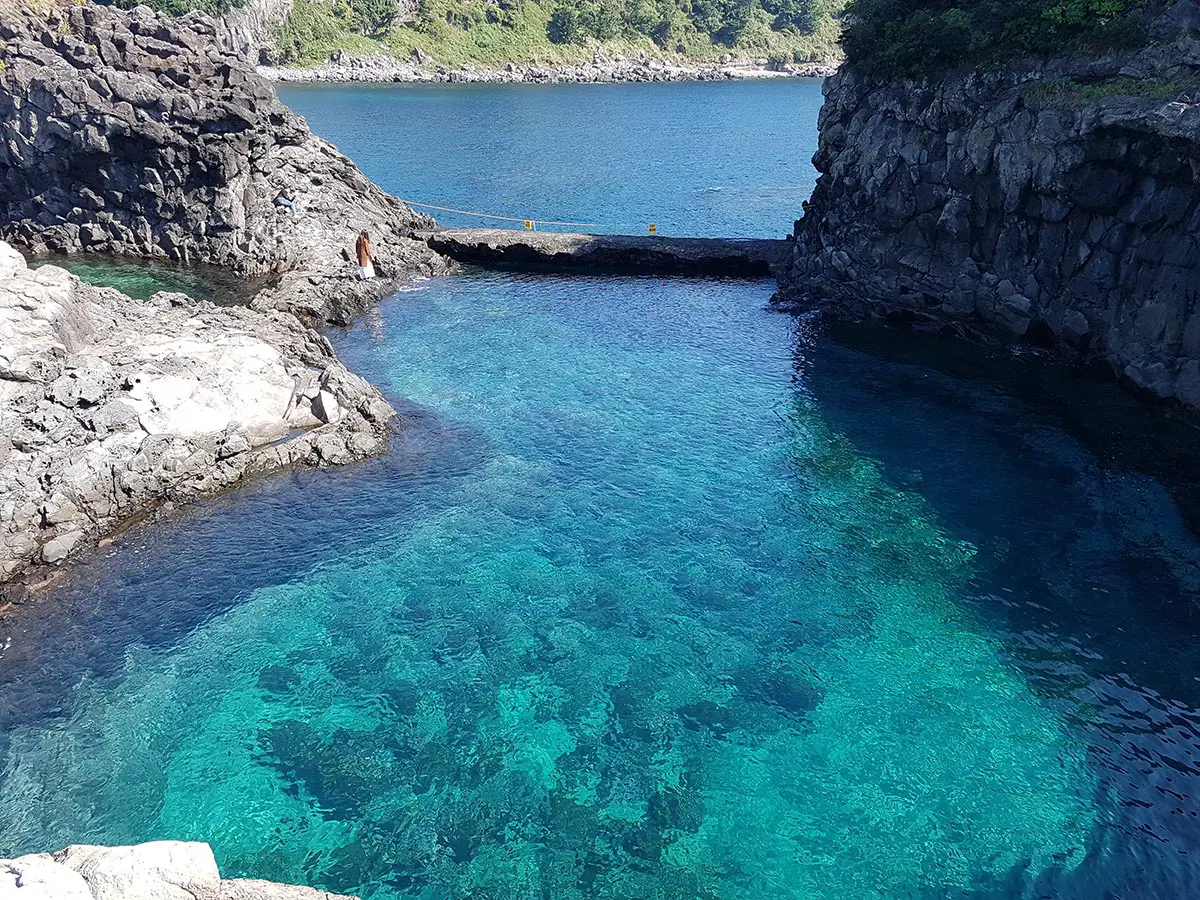
Although Jeju Island is not a very large island, has been blessed with remarkable terrains, magnificent peaks, lava caves and multiple waterfalls. The place is suitable for people of all age groups and I strongly recommend it to anyone who loves nature and natural beauties.
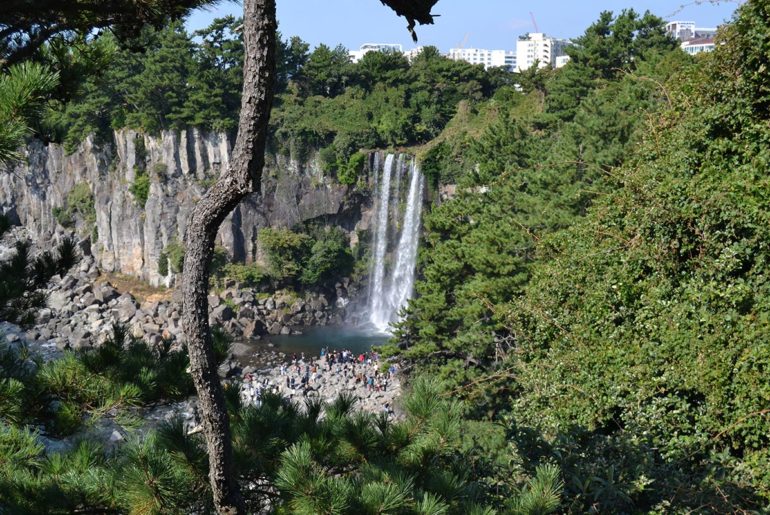
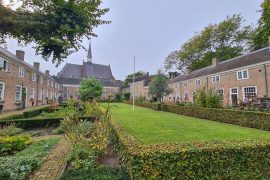
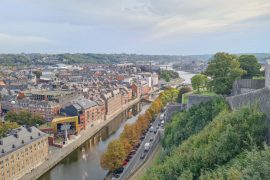
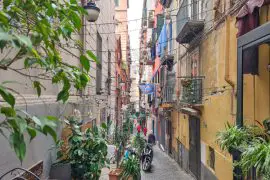

4 Comments
visited Jeju in mid June, what an experience. loved every minute of our time there.
Me too. I had a great experience in Jeju Island.
Great information 🙂 Thank you so much!
You’re welcome! 🙂